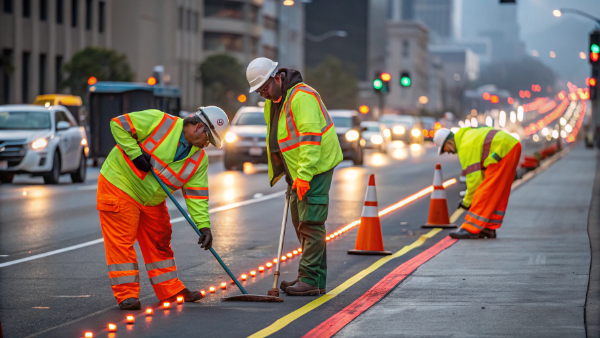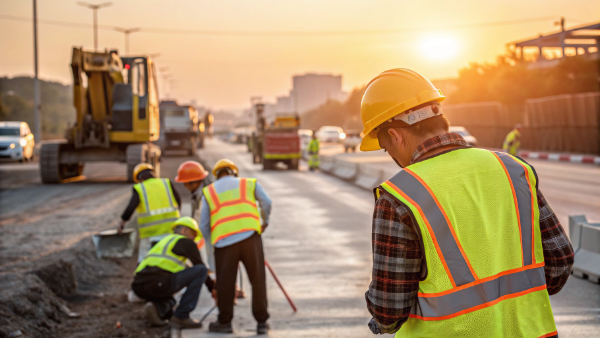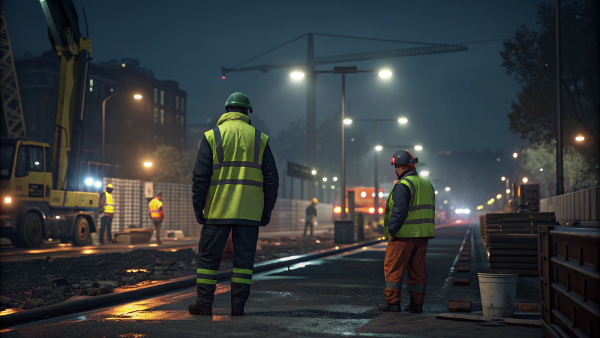Working near traffic is dangerous and stressful. Without the right gear, you are almost invisible to drivers. Type R jackets are made to keep you seen and safe.
A Type R jacket is high-visibility safety apparel designed for workers exposed to roadway traffic. It meets the ANSI/ISEA 107 standard1. This gear is essential for anyone working in environments with moving vehicles, providing the conspicuity needed to prevent accidents and protect lives.
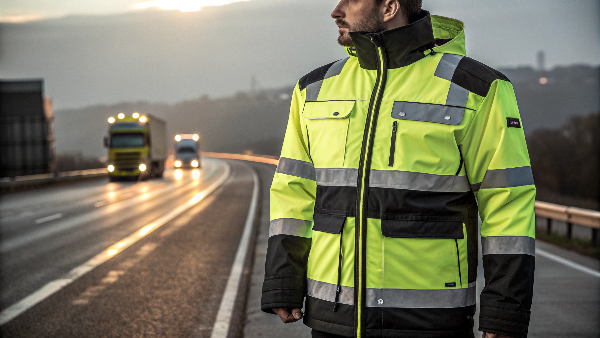
I've been in the safety wear business2 for over a decade here at Vissafety. I talk to people like Danny Cheng in California all the time. He supplies gear for construction crews, and he can't afford any mistakes with safety standards3. He needs to know exactly what his people should be wearing. Understanding these classifications, like "Type R," is the first step. It's not just about meeting rules; it's about making sure every worker goes home safe at the end of the day. So let's break down what these terms really mean.
What is a type R class 3 jacket?
Working on a highway at night? A standard vest may not offer enough protection. You need the highest level of visibility when traffic is moving fast.
A Type R Class 3 jacket4 gives you the most visibility. It has the largest required amount of fluorescent background material and reflective tape. This is mandatory for workers in the highest-risk environments, like highway construction or emergency response.
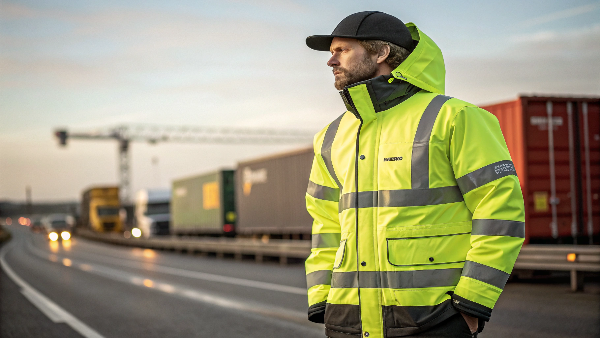
A Type R Class 3 jacket is the top level of protection in the ANSI/ISEA 107 standard. The "Class 3" part is what makes it so different. It means the garment must have sleeves. Why? Because sleeves with reflective material make it easier for drivers to see a person's full shape. It helps a driver's brain recognize a human much faster than just a glowing torso.
This is critical for workers who are very close to traffic moving faster than 50 mph. Think about flaggers, utility crews on interstates, and survey teams. Their attention is on the job, not always on the traffic. They need gear that does the watching for them. At Vissafety, when we design a Class 3 jacket, we focus on three things:
Key Features of a Type R Class 3 Jacket
- Maximum Material: It requires the most background fabric and retroreflective tape.
- Full Body Outline: Sleeves with reflective bands are mandatory.
- All-Weather Use: Many are designed to be waterproof or insulated for bad conditions.
Here is a simple table to show the difference from Class 2.
| Feature | Type R Class 2 | Type R Class 3 |
|---|---|---|
| Sleeves | Not required | Required (with reflective material) |
| Background Fabric Minimum | 775 square inches | 1240 square inches |
| Reflective Tape Minimum | 201 square inches | 310 square inches |
| Primary Use | Roadways with traffic > 25 mph | Roadways with traffic > 50 mph, low light, bad weather |
We always advise our clients that if there is any doubt, they should choose Class 3. You can't be too visible.
What does type R vest mean?
You see "Type R" on vests and jackets. Does it mean "roadway"? Understanding this simple label is key to making sure your team is safe and compliant.
A Type R vest5 is specifically designed for workers exposed to roadway traffic. The "R" stands for "Roadway." These vests meet ANSI/ISEA 107 standards for workers who must be visible to approaching vehicles.
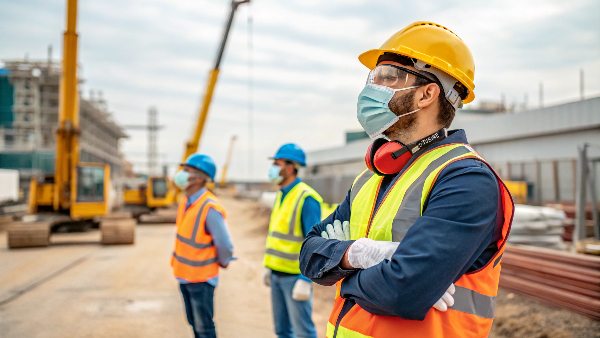
The ANSI/ISEA 107 standard is the rulebook for high-visibility clothing in the United States. To make it easier, the standard creates "Types" based on the work environment. "Type R" is the most common one we produce. It covers a huge range of workers, from road construction crews to airport ground staff.
The key idea behind Type R is that the worker needs to be seen against a complex background6. Think about a construction zone. You have trucks, cones, signs, and other workers. A Type R garment uses bright fluorescent colors to make the worker stand out during the day. It also uses retroreflective tape to light them up in headlights at night.
Within Type R, there are different performance classes (we'll cover those more later). This helps you match the level of protection to the level of risk. A parking lot attendant (Class 1) has a different risk level than a highway flagger (Class 3). But both fall under Type R because they are near traffic. Our job is to help customers pick the right class within the Type R category for their specific needs.
What is the difference between Type P and Type R safety vest?
Police officers and road workers both need visibility. But their gear is very different. Using the wrong type can compromise safety and job performance on site.
Type R (Roadway) vests maximize visibility for workers near traffic. Type P (Public Safety) vests balance high visibility with the need for first responders to access equipment on their belts.
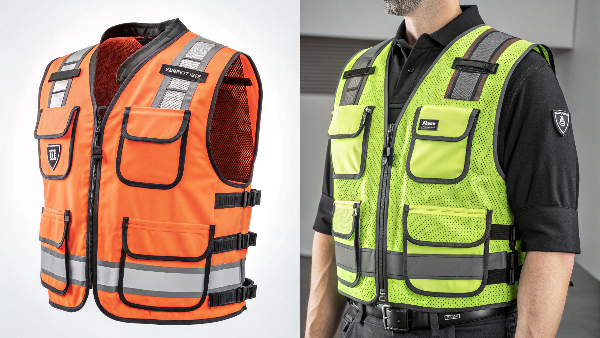
The difference between Type P and Type R is all about function. Both are for people working near roads, but their jobs are not the same. A road worker's main priority is to be seen from as far away as possible. They need maximum coverage of bright, reflective material.
A police officer or firefighter has a different challenge. They also need to be seen, but they must be able to access their tools quickly. This includes a firearm, radio, handcuffs, or medical equipment. A standard, long Type R vest would cover up their duty belt. So, Type P garments are designed to be shorter. They often have breakaway features, so if the vest gets snagged on something, the worker can get free easily.
Here's a direct comparison:
| Feature | Type R (Roadway) | Type P (Public Safety) |
|---|---|---|
| Primary User | Construction workers, flaggers, utility crews | Police, firefighters, emergency responders |
| Main Goal | Maximum conspicuity and visibility | Balance of visibility and quick access to equipment |
| Design | Longer torso, full coverage | Shorter torso to allow access to duty belts |
| Special Feature | Often includes pockets for tools | Often includes breakaway points for safety |
When a client asks us for vests for their security team that directs traffic, we ask more questions. Do they need to access gear? If so, Type P is the better choice. It's this kind of detail that ensures safety and efficiency.
What is a type O vest?
Not all workers are near highways. What about workers in warehouses or on factory floors? They still need to be seen, but their risk level is very different.
A Type O (Off-Road) vest is for workers in environments away from public road traffic. This includes places like warehouses or factories. It gives basic visibility but meets a lower standard than Type R vests.
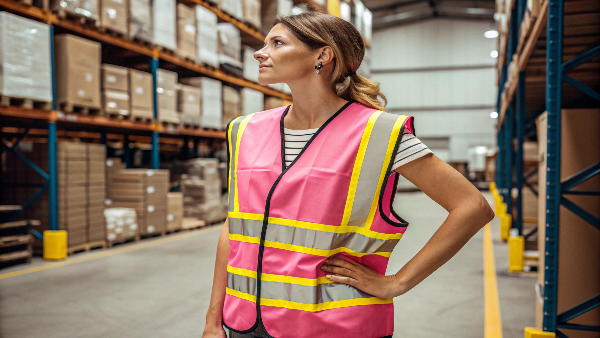
Think of Type O as the entry-level for high-visibility gear. The "O" stands for "Off-Road." The main risk here is not a car going 60 mph. It's a forklift, a small cart, or other moving equipment in a more controlled space. Because the speeds are lower and the environment is less complex, the requirements for Type O gear are less strict.
Type O garments are only available in one performance class: Class 1. This class requires the least amount of fluorescent and reflective material. It's designed to make sure a worker can be seen by a nearby equipment operator, but it's not intended for roadway use.
Here are some common jobs where Type O vest7s are used:
- Warehouse workers
- Factory floor staff
- Parking lot attendants
- Shopping cart retrievers
Choosing Type O for these jobs is a smart move. It provides the necessary safety without the higher cost of Type R gear. It's about using the right tool for the right job. We help businesses outfit their entire operation, from the road crew (Type R) to the warehouse team (Type O), making sure everyone is safe and the budget is used wisely.
What does type R stand for?
Safety standards use many letters and numbers. "Type R" is one of the most common terms. Knowing exactly what it means is the first step to choosing the right gear.
The "R" in Type R stands for "Roadway." This name comes from the ANSI/ISEA 107 standard. It means the safety garment is designed and tested for workers exposed to traffic.
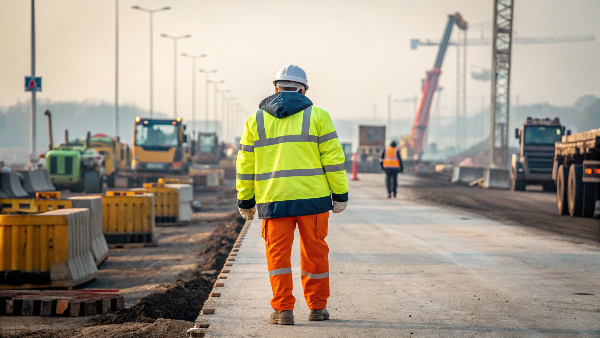
The ANSI/ISEA 107 standard creates a simple system to help people choose the right high-visibility safety apparel (HVSA). The system is based on two key questions:
- Where will the work be done? (The "Type")
- What is the risk level? (The "Class")
The "Type" tells you the environment. As we've discussed, there are three main types: Type O for Off-Road, Type P for Public Safety, and Type R for Roadway. "Roadway" is the broadest category. It covers anyone who works on or near a public road where they are exposed to moving vehicles. This could be a local street or a major highway.
The standard defines things very clearly. For a garment to be labeled as Type R, it must meet minimum requirements for the amount of fluorescent background material and retroreflective tape. This ensures the worker will be visible to drivers from a safe distance, both day and night. When you see "Type R" on one of our jackets, you know it's built for that specific, hazardous environment. It's not just a label; it's a promise of protection.
What's the difference between class 1, 2, and 3 safety vests?
Choosing between Class 1, 2, or 3 can be confusing. The wrong choice means your team is not compliant and not safe. Let's make this simple and clear.
The main difference is the amount of reflective and fluorescent material on the vest. Class 1 has the least and is for low-risk areas. Class 2 is for higher risks. Class 3 offers the most material for maximum visibility8.
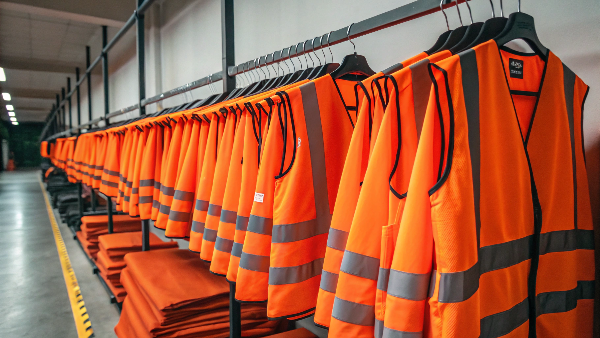
The performance "Class" is all about the level of risk. The higher the class number, the more visible the garment makes you. The choice depends on the work environment, the speed of nearby traffic, and how complex the background is.
Let's break it down in a table. The measurements are the minimum square inches of material required by the ANSI/ISEA 107 standard.
| Feature | Class 1 (Type O only) | Class 2 (Type R & P) | Class 3 (Type R & P) |
|---|---|---|---|
| Use Case | Off-road, low-speed (<25 mph) | Roadways with traffic > 25 mph | Roadways > 50 mph, complex backgrounds, low light |
| Example Job | Parking lot attendant | Roadside survey crew, school crossing guard | Highway construction worker, flagger |
| Background Fabric | 217 sq. in. | 775 sq. in. | 1240 sq. in. |
| Reflective Tape | 155 sq. in. | 201 sq. in. | 310 sq. in. |
| Sleeves | No | No | Yes (with reflective tape) |
As you can see, each class adds more high-visibility material. The jump from Class 2 to Class 3 is significant because it adds sleeves. This is a game-changer for visibility, as it helps define the human form. For our clients, we always start by asking about the job site. This tells us what class is needed to keep their team safe.
When should a class 3 vest be worn?
Your team works near fast traffic, in bad weather, or at night. Are they protected enough? Knowing when to wear Class 3 gear is not optional; it is essential.
A Class 3 vest or jacket must be worn when a worker is exposed to high-speed traffic (over 50 mph), has a complex background, or works in low-light or bad weather.
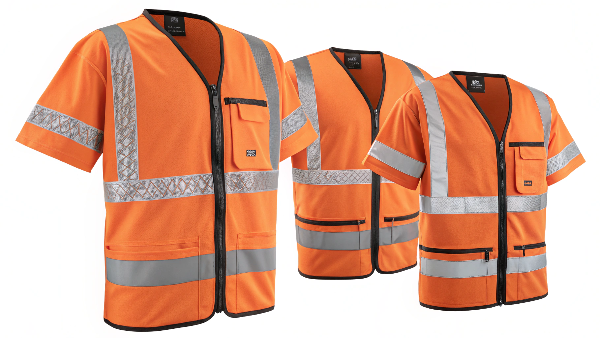
Class 3 is the highest level of protection for a reason. It is designed for the absolute worst-case scenarios a worker might face. You should always use Class 3 apparel when any of these conditions are present:
High-Risk Scenarios Demanding Class 3
- High Traffic Speeds: When vehicles are traveling over 50 mph (80 km/h). There is very little time for drivers to react, so the worker must be visible from a great distance.
- Low Visibility Conditions: This includes working at night, dawn, or dusk. It also includes weather like fog, heavy rain, or snow that reduces a driver's sight distance.
- Complex Backgrounds: A busy urban street at night is a good example. There are headlights, traffic lights, neon signs, and other distractions. A Class 3 garment helps the worker stand out from the visual noise.
- High Task Loads: When the worker is so focused on their job that they can't pay constant attention to traffic. This is true for flaggers, who must watch traffic patterns, and utility workers, who might be focused on a repair.
The mandatory sleeves on Class 3 garments are the most important feature. Seeing two glowing arms and a glowing torso helps drivers recognize a person much faster. As a manufacturer, we know that building a compliant and comfortable Class 3 jacket is one of the most important things we do. It's a true piece of life-saving equipment.
Conclusion
Understanding Type R and its classes is vital for roadway safety. We help you choose the right gear, ensuring your team is always visible and protected
-
Understand the ANSI/ISEA 107 standard and its significance in safety gear compliance. ↩
-
Gain insights into the challenges and solutions in the safety wear industry. ↩
-
Understand the key safety standards that govern visibility gear for workers. ↩
-
Discover the features and requirements of Type R Class 3 jackets for maximum visibility. ↩
-
Discover the meaning and importance of Type R vests for workers exposed to roadway traffic. ↩
-
Discover how complex backgrounds impact visibility and the need for high-visibility gear. ↩
-
Explore the purpose and applications of Type O vests in non-roadway environments. ↩
-
Explore the critical role of maximum visibility in ensuring worker safety near traffic. ↩

